#egyptian history
Text
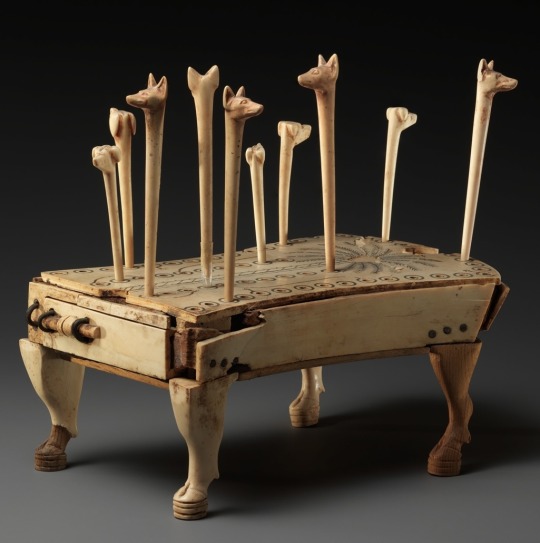
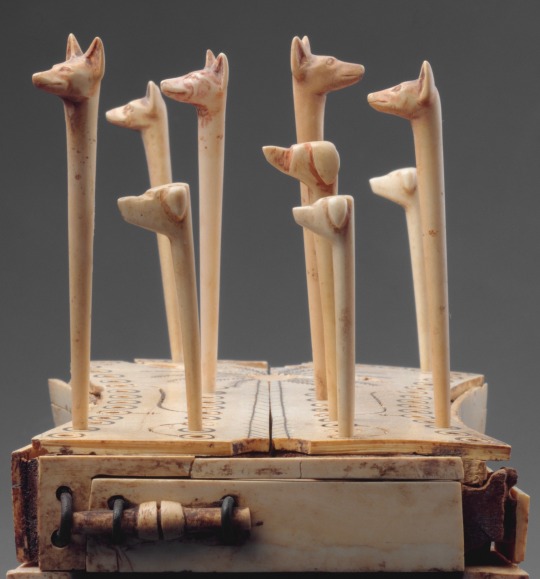
Egyptian
Game of Hounds and Jackals
Middle Kingdom, ca. 1814-1805 B.C.E.
#egyptian art#ancient egypt#ancient art#hounds and jackals#ancient history#artifact#antiquities#ancient people#ancient culture#egyptian history#egyptian culture#board games#chess#aesthetic#beauty#art history#aesthetictumblr#tumblraesthetic#tumblrpic#tumblrpictures#tumblr art#tumblrstyle#artists on tumblr#ancient artifacts
4K notes
·
View notes
Text



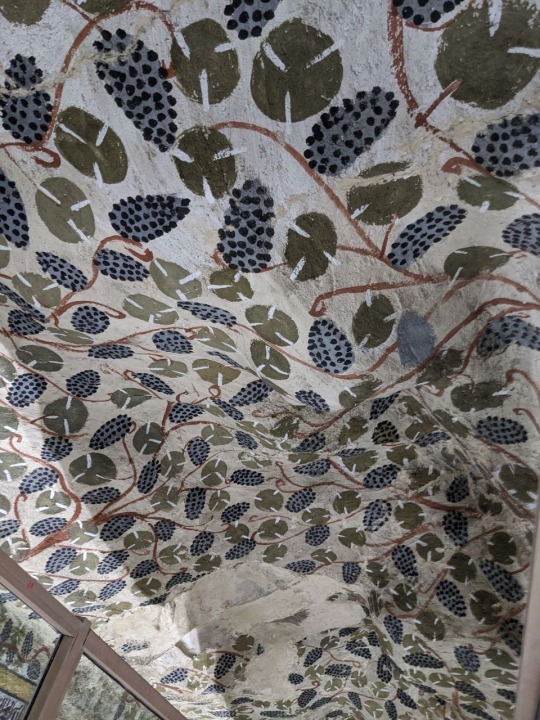


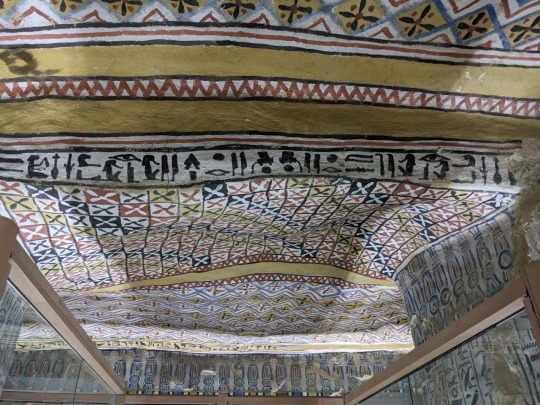
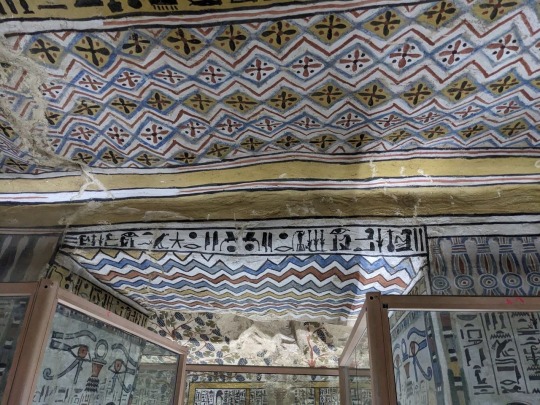
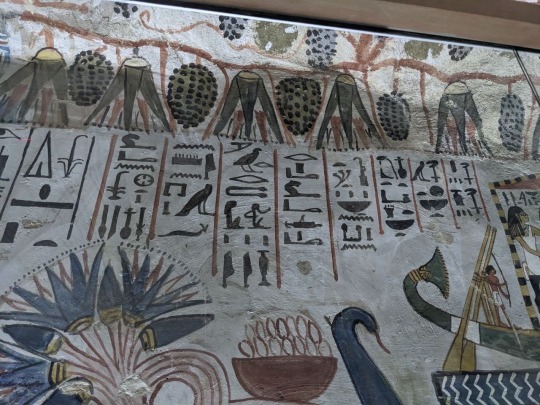

Ceiling and imagery of the Tomb of the Vineyards, burial of Sennefer, Mayor of the Southern City, Thebes, during the 18th dynasty of Egypt.
Photos taken by me, August 2023
It’s hard to tell which way is up and down when walking through the tunnel leading from the surface into the tomb. Before entering the main chamber there is a small antechamber whose ceiling is quite low, and then a shallow arch which leads to the main room depicted in the above photographs. Both chambers contain a good deal of paintings, however the main chamber holds the most numerous and well preserved paintings, of course. Besides the ceiling, everything is encased in glass.
#ancient egypt#egyptian mythology#egyptian hieroglyphs#egyptian art#ancient history#egyptian gods#egyptology#hieroglyphs#archaeology#egyptian history#egypt
2K notes
·
View notes
Text
Back to the past| Dark! Tutankhamun x Modern! Reader
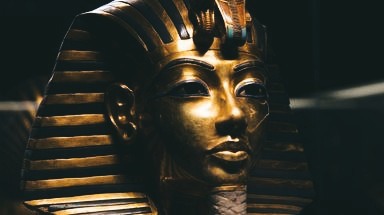
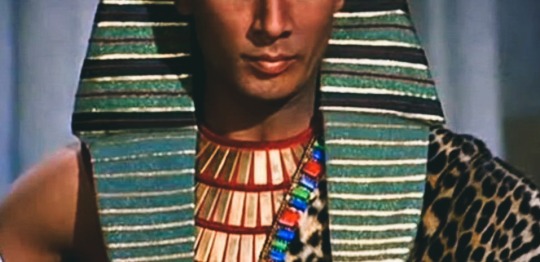

After discovering your fiance's cheating, you didn't expect to make a car accident and get transported to the past.
And not only that but meet Pharaoh Tutankhamun.
Who becomes fiercely protective of you, monitoring their every move to ensure their safety.
He might even go to extreme lengths to eliminate perceived threats.
He declares you in front of others as his wife and royal Possession Tutankhamun insists on having yoy close at all times, whether it's attending royal events together or keeping them within the palace walls.
As he Becomes more possessive as time goes on, Tutankhamun might isolate you from others, limiting your interactions to maintain control over your social circle.
Any attention you receive from none other than him, triggers Tutankhamun's jealousy, leading to intense reactions that range from subtle displeasure to more overt displays.
The young pharaoh gives you symbolic tokens of his love, like unique jewelry or clothing, to strength your connection to him.
Expensive gifts are the way to the woman's heart.
He even built a tomb for you beside his own.
"What do you think of your tomb, my love? I had everything made out of gold"
Like the delusional pharaoh really wants you to be with him in the after life.
He would pretend to be sick sometimes because he enjoys how you worry over him.
Even though you are aware of his tendencies, but you have to bear with it.
I mean what choice do you have?
It's either the streets or be the queen of one of the most famous Egyptian pharaohs.
#tw: toxic relationships#reader insert#Yandere pharaoh#tutankhamun#Tutankhamun x reader#History#egyptian history
933 notes
·
View notes
Text
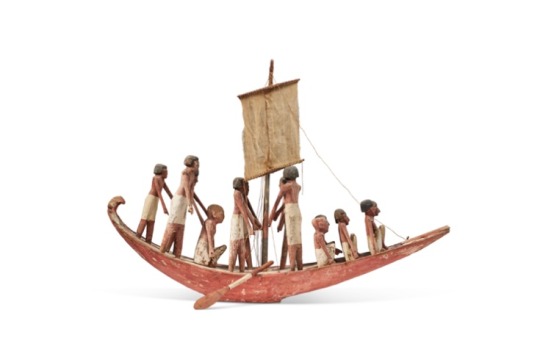

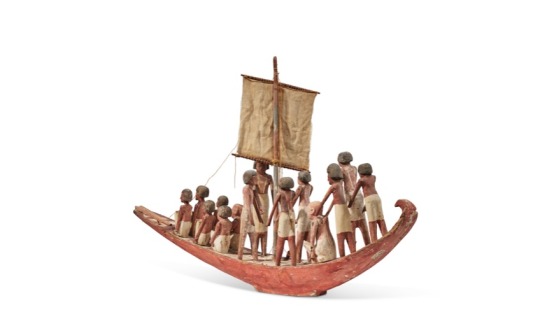
AN EGYPTIAN GESSO-PAINTED WOOD FUNERARY MODEL OF A BOAT
MIDDLE KINGDOM, 11TH-12TH DYNASTY, 2087-1759 B.C.
#AN EGYPTIAN GESSO-PAINTED WOOD FUNERARY MODEL OF A BOAT#MIDDLE KINGDOM#11TH-12TH DYNASTY#2087-1759 B.C.#ancient artifacts#archeology#archeolgst#history#history news#ancient history#ancient culture#ancient civilizations#ancient egypt#egyptian history#egyptian mythology#egyptian art
407 notes
·
View notes
Text
433 notes
·
View notes
Text

Gold finger ring with carnelian frog, Egypt, circa 1550-1295 BC
from The Walters Art Museum
#history#antiquities#art#jewelry#jewellery#ancient art#ancient jewelry#ancient history#ancient egypt#egypt#egyptian history
833 notes
·
View notes
Text
On This Day In History
March 3rd, 1917: Egyptian nuclear physics Sameera Moussa was born. She was an activist for peaceful uses of nuclear energy, especially as a form of cancer treatment. She was the first woman to work at Cairo University and the first person of color to be allowed to visit secret US atomic facilities—a highly controversial event.
104 notes
·
View notes
Text
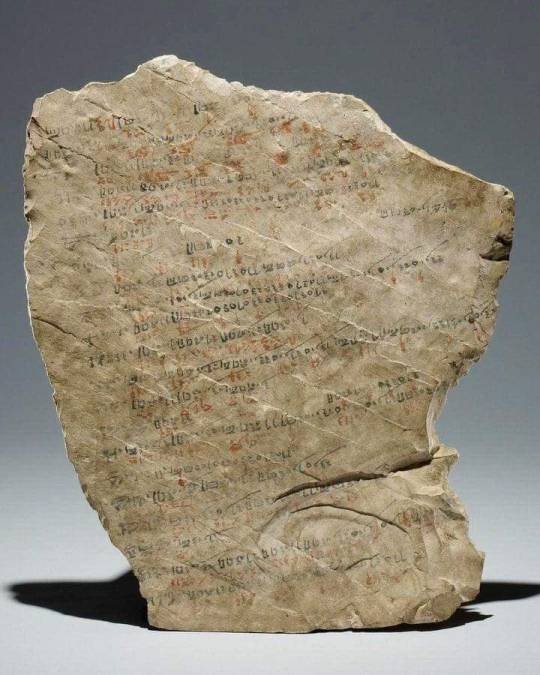
Excuses from a 3,250-year-old tablet in ancient Egypt where workers' "reasons for not coming to work" are written: "His mother is being mummified." "Brewing beer." "Bitten by a scorpion." "His eyes are hurting."
More: https://thetravelbible.com/top-ancient-egyptian-artefacts/
82 notes
·
View notes
Text
egyptian asteroid observations (part 1)
these observations are completely hypothetical. they are based on my (the those closest to me's) experiences with each aspect/ placement! please don't take everything i say as predestined, astrology is possible outcomes not guaranteed ones. this is just a starting place for when examining singular objects in an entire galaxy (these are not the only asteroids in affect for you). take what resonates and leave what doesn't!

☥ scorpio (8°, 20°) akthenatan (326290) people can be extremely obsessive over the occult
☥ akthenatan (326290) negatively aspecting mercury tends to manifest as people with atypical (and/or extremist) beliefs
☥ akthenatan (326290) aspecting venus people often feel stress and pressure to follow beauty standards and to meet romantic/relationship milestones
☥ earth anubis (1912) people aren't quick to give up on their search for answers
☥ anubis (1912) positively aspecting vertex, mc, and/or the 6h/10h ruler individuals could be skill healers or considerably gifted in the realm of medicine/science
☥ anubis (1912) retrograde people often don't have a lot of experience with losing people who they are close to early in their life
☥ 1-6h apophis (99942) placements tend to be apophis-like, while 7-12h apophis (99942) placements tend to deal with apophis-like people
☥ 7h apophis (99942) people are likely to have a bad divorce where their ex tries to "ruin" their life
☥ people with a lot of positive apophis (99942) aspects and little to no negative aspects tend to be more resilient in the face of chaos
☥ libra (7°, 19°) athor (161) / hathor (2340) people are naturally care takers
☥ 7h athor (161) / hathor (2340) people often defend their husband around their blood-family
☥ 11h athor (161) / hathor (2340) people are typically quick to defend their chosen family
☥ athor (161) / hathor (2340) positively aspecting uranus people frequently are welcoming towards everyone - they are deemed approachable by the world/society around them

like what you read? leave a tip and state what post it is for! please use my "suggest a post topic" button if you want to see a specific post or mythical asteroid next!
click here for the masterlist
click here for more egyptian myths & legends
want a personal reading? click here to check out my reading options and prices!
© a-d-nox 2023 all rights reserved
#astrology#astro community#astro placements#astro chart#asteroid astrology#asteroid#natal chart#persona chart#astrology tumblr#astro observations#astro notes#astrology notes#astro content#astroblr#astrology hypothesis#astrology observations#astrological help#egyptain mythology#egyptology#egyptian history#akthenatan#anubis#apophis#athor#hathor#asteroid326290#asteroid1912#asteroid99942#asteroid161#asteroid2340
146 notes
·
View notes
Text
https://x.com/historydefined/status/1709193710326460572?s=46&t=4a6f2i_4CEH0mmzdYPAtvA

Egyptian or Phoenician glass dog head bead. 6th-4th Century BCE
#egyptian history#artefact#historyblr#ancient art#ancient#history#ancient history#antiquities#artifacts
88 notes
·
View notes
Text
Ṣafa; Egyptian Women with coins in their hair

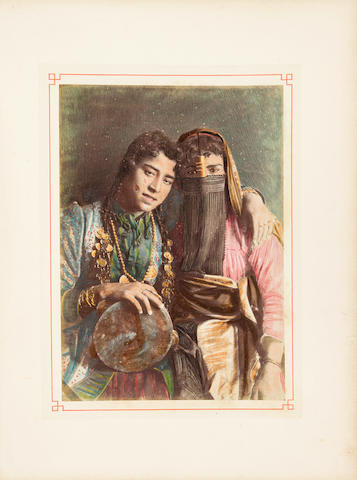



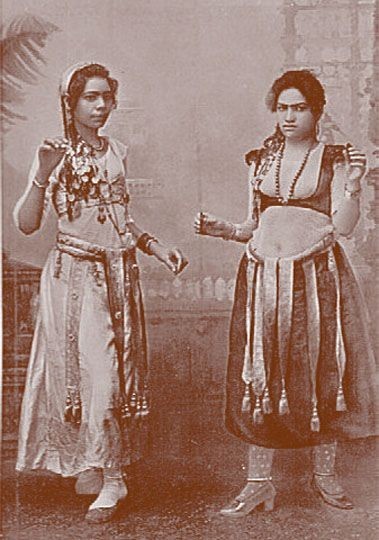
This style is attested in Edward William Lane's work from the 1830s. He describes it as follows:
The hair, except over the forehead and temples, is divided into numerous braids or plaits, generally from eleven to twenty-five in number, but always of an uneven number: these hang down the back. To each braid of hair are usually added three black silk cords, with little omaments of gold, &c., attached to them. For a description of these, which are called "ṣafa," I refer to the Appendix. Over the forehead, the hair is cut rather short; but two full locks (called "maḳàṣees"; singular "maḳṣooṣ") hang down on each side of the face: these are often curled in ringlets and sometimes plaited. (Egyptian women swear by the side-lock (as men do by the beard), generally holding it when they utter the oath, "Wa-ḥayát maḳṣooṣee!") [Page 45-46]
Further detail comes from an appendix focusing on jewelry:

It has been mentioned that all the hair of the head, except a little over the forehead and temples, is arranged in plaits, or braids, which hang down the back. These plaits are generally from eleven to twenty-five in number; but always of an uneven number: eleven is considered a scanty number: thirteen and fifteen are more common. Three times the number of black silk strings (three to each plait of hair, and each three united at the top), from sixteen to eighteen inches in length, are braided with the hair for about a quarter of their length; or they are attached to a lace or band of black silk which is bound round the head, and in this case hang entirely separate from the plaits of hair, which they almost conceal. These strings are called "ḳeyṭáns" and together with certain ornaments of gold, &c., the more common of which are here represented, compose what is tenned the "ṣafa". Along each string, except from the upper extremity to about a quarter or (at most) a third of its length are generally attached nine or more of the little flat ornaments of gold called "barḳ." These are commonly all of the same form, and about an inch, or a little more, apart; but those of each string are purposely placed so as not exactly to correspond with those of the others. The most usual forms of barḳ are Nos. 1 and 2 of the specimens given above. At the end of each string is a small gold tube, called "másoorah," about: three-eighths of an inch long, or a kind of gold bead in the form of a cube with a portion cut off from each angle, called "ḥabbeh." Beneath the másoorah or ḥabbeh is a little ring, to which is most commonly suspended a Turkish gold coin called "Ruba Fenduḳlee," equivalent to nearly 1s. 8d. of our money, and a little more than half an inch in diameter. Such is the most general description of ṣafa ; but there are more genteel kinds, in which the ḥabbeh is usually preferred to the másoorah, and instead of the Ruba Fenduḳlee is a flat ornament of gold, called, from its form, "kummetrè," or "pear." There are also other and more approved substitutes for the gold coin; the most usual of which is called "shiftisheh," composed of open gold work, with a pearl in the centre. Some ladies substitute a little tassel of pearls for the gold coin; or suspend alternately pearls and emeralds to the bottom of the triple strings; and attach a pearl with each of the barḳ. The ṣafa thus composed with pearls is called "ṣafa loolee.'' Coral beads are also sometimes attached in the same manner as the pearls. From what has been said above, it appears that a moderate ṣafa of thirteen plaits will consist of 39 strings, 351 barḳ, 39 másoorahs or ḥabbehs, and 39 gold coins or other ornaments; and that a ṣafa of twenty-five plaits, with twelve barḳ to each string, will contain no fewer than 900 barḳ, and seventy-five of each of the other appendages. The ṣafa appears to me the prettiest, as well as the most singular, of all the ornaments worn by the ladies of Egypt. The glittering of the barḳ, &c., and their chinking together as the wearer walks, have a peculiarly lively effect. [Page 572-574]
He goes onto describe a similar style worn by poorer women, but I probably will do its own post because it was still being worn in the Western Oases near the 1970s, and really doesn't use coins or barḳ.
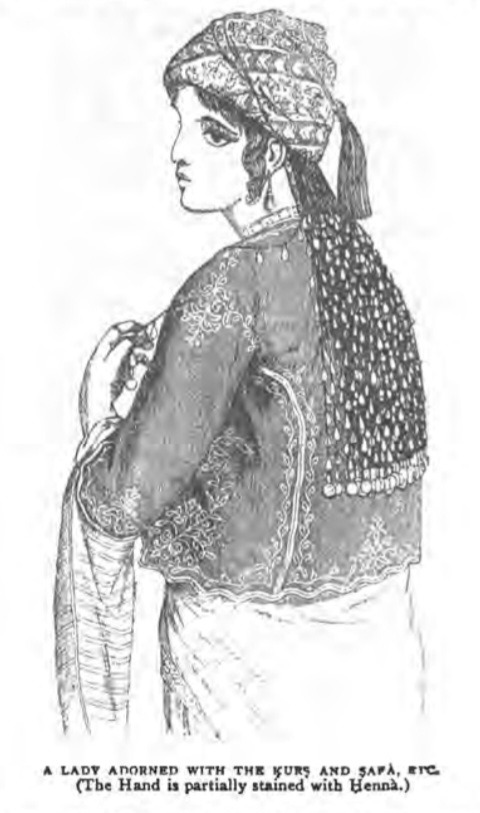

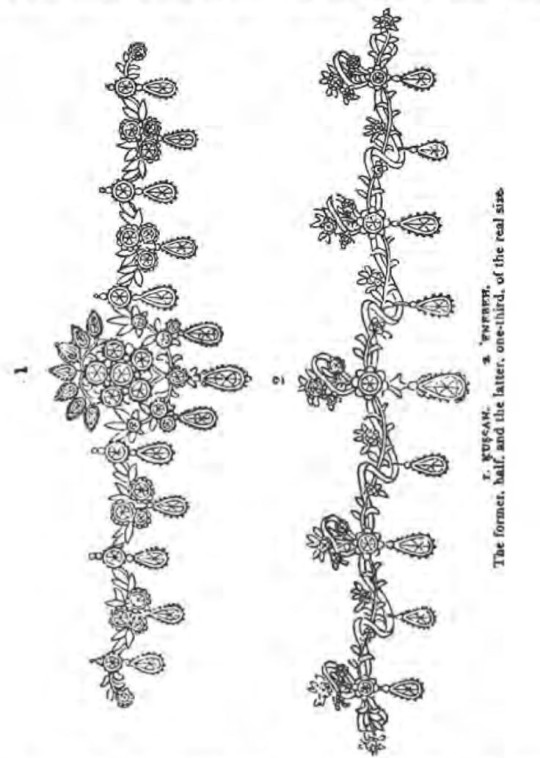
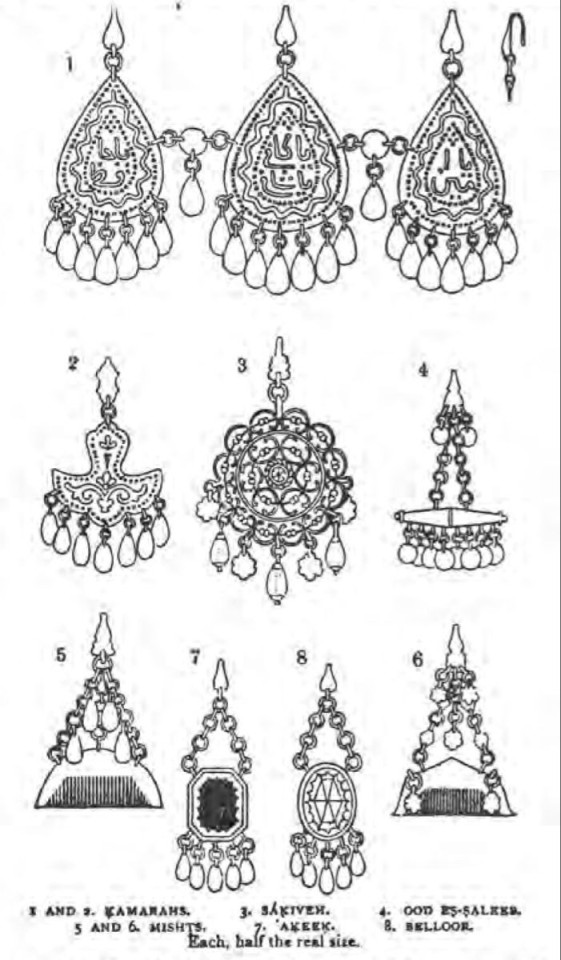
This hairstyle initally was also worn with a particular headdress of upper and middle class Egyptian women, called a rabṭah, which is essentially a woman's turban. It is made with a tarboosh or ṭáḳeeyeh (I think Lane might mean taqiyah) as the base, with muslin printed or painted scarves called faroodeeyeh, or crepe scarves wrapped around it in a high, flat pattern. Over the tarboosh was stitched down an ornament called a ḳurṣ, made of metal and often gems, and distinguished by material- generally wether it was made of diamonds (ḳurṣ almás) or of gold (ḳurṣ dahab), with the latter often having an emerald or ruby cabochon in the center. A ḳuṣṣah/'enebeh (items similar to the Algerian khit errouh) or shawáṭeḥ (worn in the same manner, but made of pearl strands or netted beading with an emerald in the center) may also be attached, as well as many other small pendants and pins. It sometimes also had silver or gilt spangles attached to the front, in which case the rabṭah was made of rose or black muslin or crepe.
As can be seen from the sharper photos of bare headed women, the braids themselves start a few inches away from the scalp, not directly at it, probably owing to the texture of most of these women's hair.
While initally as Lane describes, this was a hairstyle for the middle and upper class, as those classes began to look increasingly at European fashions under the Khedivate and British Occupation, the hairstyle mainly continued use among the poor, dancers, and some Beoduins.
This style of many braids with bangs and often a turban over top is potentially rather old in Ottoman Turkish art, with examples appearing from the 17th century- though they are unfortunately unclear, as they could also be stylized tendrils of hair, and in some cases, clearly are such.

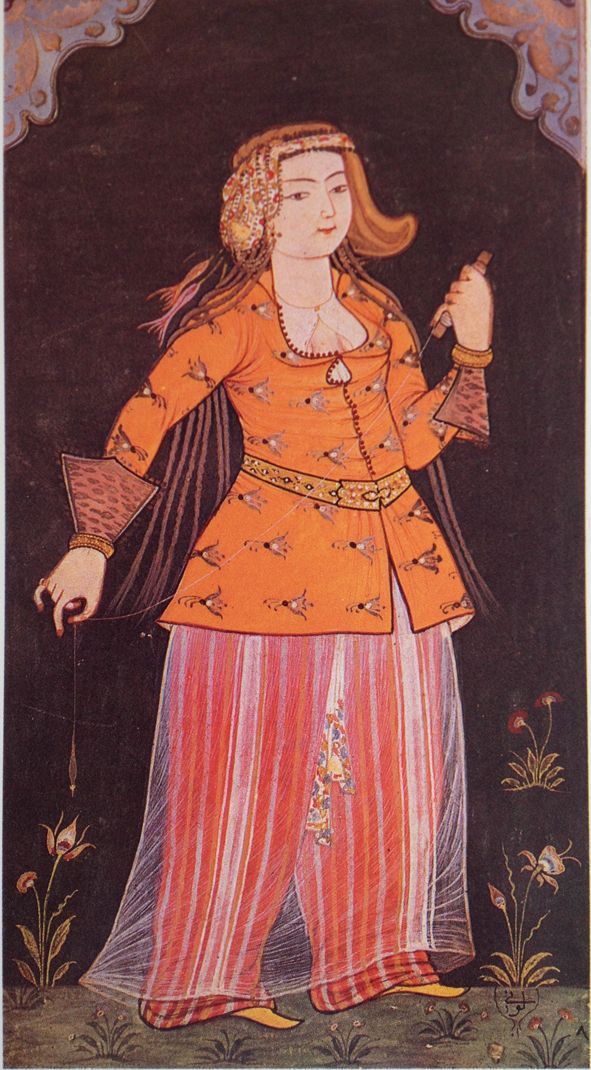

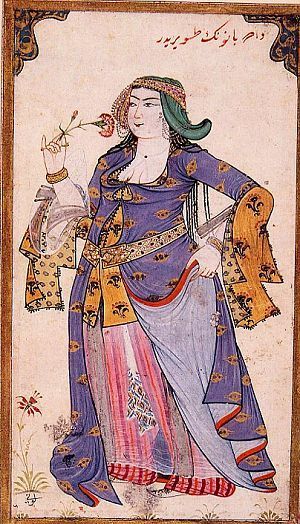
Similar styles of many long braids started a few inches away from the scalp are still used in Turkic groups such as Uzbeks and Uyghurs, particularly while wearing folk dress.
Sources/further reading:
Edward William Lane, The Manners and Customs of the Modern Egyptians.
Heather D. Ward, Egyptian Belly Dance in Transition: The Raqs Sharqi Revolution, 1890-1930
Unfortunately I don't have more to offer you, even for the Turkish style.
106 notes
·
View notes
Text


Egyptian
Sphinx of Amenhotep IlI, (possibly from a Model of a Temple)
New Kingdom, ca. 1390-1352 B.C.E.
#egypt#egyptian art#egyptian history#sphinx#ancient art#ancient egypt#ancient history#ancient people#artifacts#antiquities#ancient culture#ancient aesthetic#aesthetic#beauty#statue#art history#aesthetictumblr#tumblraesthetic#tumblrpic#tumblrpictures#tumblr art#tumblrstyle#artists on tumblr
829 notes
·
View notes
Text

Stele fragment depicting King Thothmes III bearing the warrior crown and uraeus, presenting food offerings to the god Amun-Re
circa. 15th century BC
Located in the Israel Museum
#ancient egypt#ancient history#egyptian hieroglyphs#egyptian art#archaeology#egyptian history#egyptian mythology#egyptian gods
301 notes
·
View notes
Text
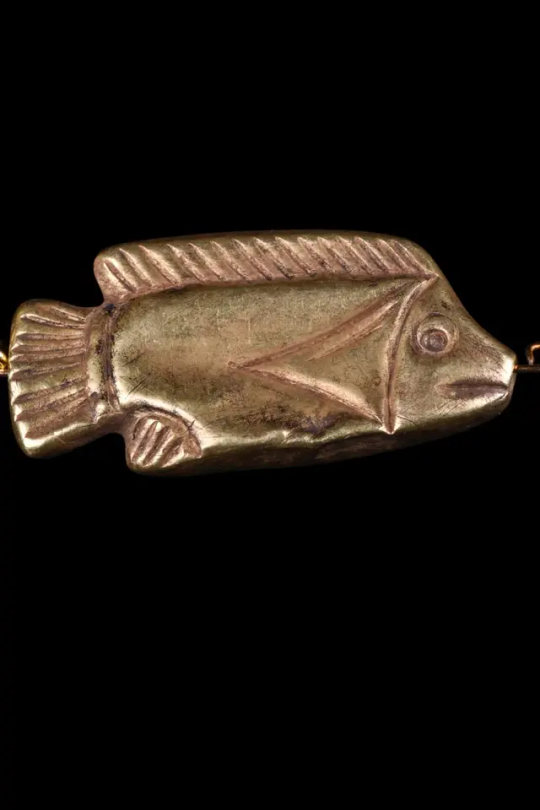

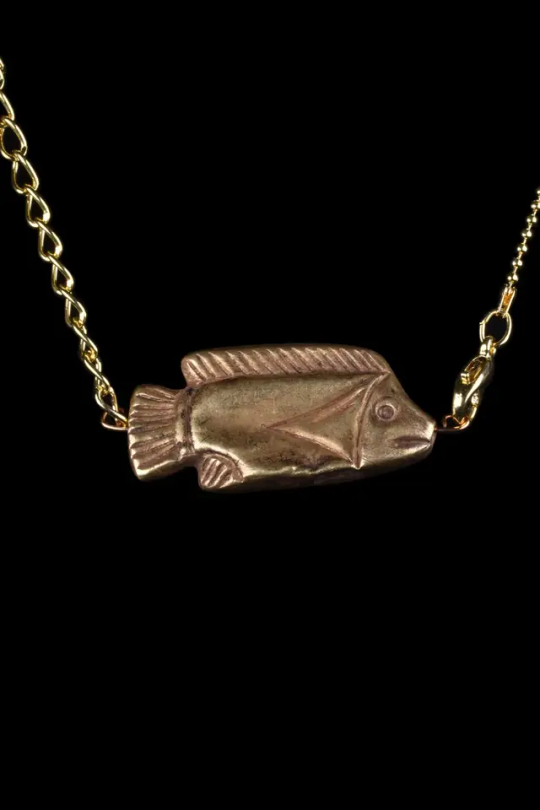
EGYPTIAN GOLD TILAPIA FISH PENDANT
New Kingdom, ca. 1550-1069 BC.
A golden amulet in the shape of a tilapia fish. A cast gold amuletic bead with a suspension hole through the centre. The fish has been crafted with careful attention to detail, boasting a tiny front fin, and with all fins intricately incised to depict their texture. Further diligence has been devoted to the face of the fish, and both sides are decorated in the same manner.
#EGYPTIAN GOLD TILAPIA FISH PENDANT#New Kingdom#ca. 1550-1069 BC#gold#gold jewelry#ancient jewelry#ancient artifacts#archeology#archeolgst#history#history news#ancient history#ancient culture#ancient civilizations#ancient egypt#egyptian history#egyptian art
522 notes
·
View notes
Text
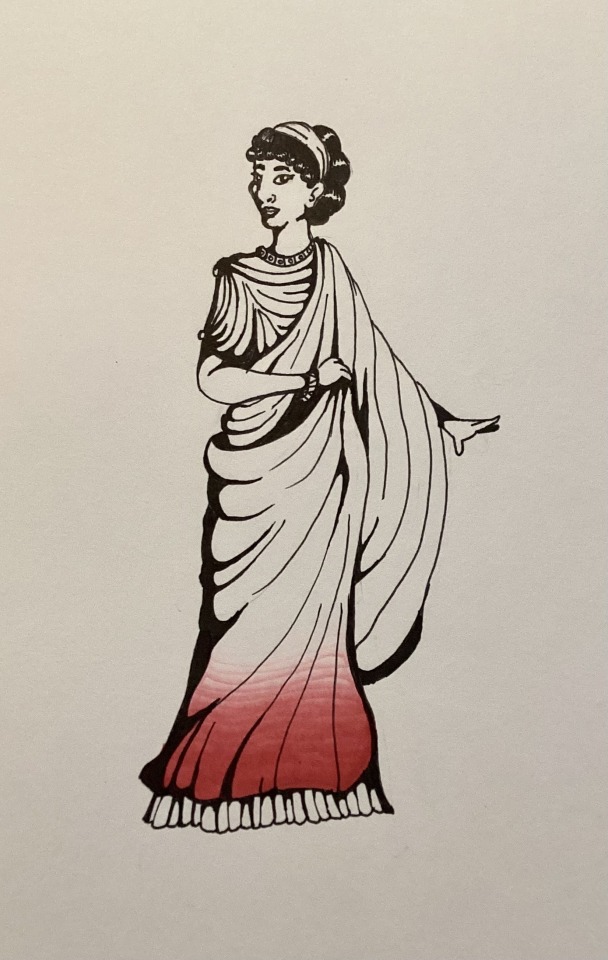
Day 7: Cleopatra Selene!
Cleopatra Selene and her brother, Alexander Helios, were born to Cleopatra VII and Marc Antony in 40 BC; the twins were named for the moon and sun. As her parents formed their Mediterranean empire, they named six-year-old Cleopatra Selene Queen of Cyrenaica and Libya - but those plans crumbled to dust with the defeat and suicides of her parents. She and her young brothers were paraded in triumph through Rome as war prizes by Caesar Augustus, who then had them raised in the household of his sister (and Marc Antony’s former wife) Octavia.
The fate of her brothers is one of the great mysteries of the era; they simply disappeared from history. Cleopatra Selene, however, did not. She married Juba II of Numidia, a vassal king of Rome, who after Numidia’s direct annexation was granted the neighboring North African kingdom of Mauretania. The marriage was a success, and the couple essentially acted as co-rulers. Together, they created new infrastructure, expanded trade routes, and promoted the arts.
Cleopatra Selene also brought old allies and advisors of her mother’s to her new court at Caesaros, in modern-day Algeria. She promoted Egyptian influence in architecture and religion, including a version of the famous Pharos lighthouse, and firmly defended Cleopatra VII’s legacy. Defiantly, she named her son Ptolemy.
The date of her death is uncertain, with proposed dates ranging from 5 BC to 17 AD. Augustus’ court poet, Crinagoras of Mytilene, composed a poetic epigraph in which the moon goddess herself veils her face in mourning at the Queen of Mauretania’s passing.
#cleopatra selene#roman history#egyptian history#ptolemaic dynasty#awesome ladies of history#october 2023#my art#pen and ink#suicide mention tw
73 notes
·
View notes
Text

Scribe statue of Amenhotp son of Hepu, Egypt, from the reigh of Amenhotep III, 1391-1353 BC
from The Egyptian Musuem, Cairo
235 notes
·
View notes